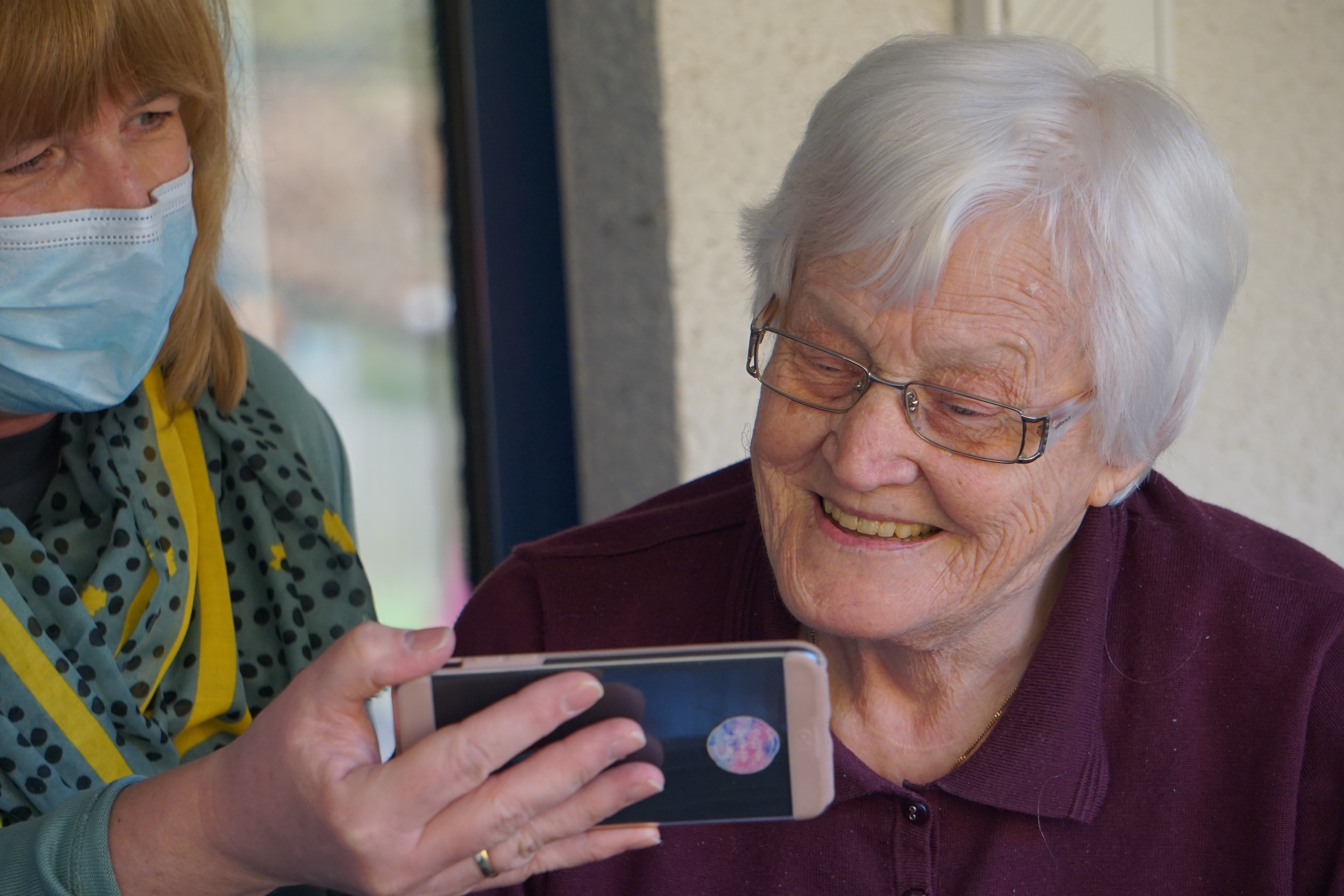
Common Eye Conditions and How to Care for Them
December 19 2022
How to Treat 6 Common Eye Conditions and Infections
Sight is one of the primary senses we use to move about the world around us. When you have low vision, blindness, or uncomfortable eye conditions or infections, it can put a strain on how you accomplish your daily tasks.
Long-term conditions and those that cannot be reversed can also affect how we feel about ourselves. When we can’t see, we are less likely to go out and socialize with friends and family, leading to isolation. This isolation combined with feelings of hopelessness and anger over an irreversible eye condition can cause anxiety and depression. But even for irreversible eye conditions, there are things that can be done to preserve what vision is left or slow the progression of the disease.
In this article, we take a look at some of the most common eye conditions and eye infections and how to care for them or treat them.
Refractive Errors
Refractive errors are the most frequent eye issue in the United States. This includes myopia (nearsightedness), hyperopia (farsightedness), astigmatism (distorted vision at all distances), and presbyopia (loss of the ability to focus up close).
Luckily all of these conditions can be corrected by eyeglasses, contact lenses, or in some cases, surgery. Patients should be encouraged to wear their corrective lenses. If they have recently had corrective surgery, they should be encouraged to follow post-surgery directions given by the eye doctor for proper healing.
Macular Degeneration
Often referred to as age-related macular degeneration (AMD), this eye disorder is associated with aging and results in damaging sharp and central vision. Common tasks such as driving and reading can become very difficult. There are two forms of AMD: wet and dry. Dry AMD is the more common of the two forms. Risk factors for AMD include:
- A family history of AMD
- Being Caucasian
- Smoking
Treatment for AMD depends on the stage and type. There is currently no treatment for early AMD and often there are no symptoms for early AMD. Patients with risk factors are encouraged to get regular eye exams if they are at risk. To lower risk for developing AMD, patients should quit smoking, exercise regularly, maintain healthy blood pressure and cholesterol levels, and eat healthy foods such as leafy green veggies and fish.
If a patient has intermediate AMD in one or both eyes, special dietary supplements may be able to stop it from turning into late AMD. If you have late AMD in one eye, supplements may slow down AMD in the other eye.
Wet AMD has some other treatments that may be able to stop further vision loss. There are medicines called anti-VEGF drugs that are injected into the eye by the patient’s doctor. Photodynamic therapy (PDT) is a combination of injections and laser treatment.
There is currently no treatment for late dry AMD, but researchers are searching for options. Patients with late dry AMD can use low vision devices to help them stay more independent, as well as vision rehab services, which helps patients learn the skills they need to stay independent and active with low vision.
Cataracts
Cataracts is the clouding of the eye’s lens and is the leading cause of blindness worldwide. Cataracts can occur at any age due to a wide variety of causes. Risk factors include:
- Certain health problems, such as diabetes
- Smoking
- Drinking too much alcohol
- A family history
- Having had an eye injury, eye surgery, or radiation treatment to the upper body
- Having spent a lot of time in the sun
- Taking steroids
Treatment for the removal of cataracts is widely available, however, there are access barriers such as insurance coverage, treatment costs, patient choice, or lack of awareness that may prevent people from receiving treatment.
Surgery to remove cataracts is very safe and 90% of those who receive surgery can see better afterward. Patients should be encouraged to follow post-surgery directions from their doctor. However, if surgery is not an option, prescription eyeglasses or contact lenses can help you see better early on in the disease. Other home treatments or changes you can make to see better include using brighter lights, wearing anti-glare sunglasses, and using a magnifying lens for reading and other activities.
Diabetic Retinopathy
This is a common complication of diabetes. Diabetic retinopathy (DR) generally affects both eyes and progresses through four stages: mild, moderate, severe, and proliferative.
Risks for DR can be reduced through diabetic disease management. This includes good control of blood sugar and blood pressure as well as lipid abnormalities. Early diagnosis of the disease can also reduce the risk of further vision loss. Patients should be encouraged to get regular eye exams and to manage their diabetes.
Glaucoma
Glaucoma is a group of diseases that can damage the eye’s optic nerve. It occurs when the normal fluid pressure inside the eyes slowly rises, however, recent findings now show that glaucoma can occur with normal eye pressure. Risk factors include:
- Over age 60, especially if you are Hispanic/Latino
- Are African American and over age 40
- Have a family history
There are two major categories of glaucoma. The first is open angle and is a chronic condition that progresses slowly over a long period of time, making it hard for the person to notice vision loss until the disease is very advanced. The second category is closed angle and can appear suddenly and is very painful. Vision loss can progress quickly, however, the pain and discomfort often leads patients to seek medical attention before permanent damage occurs.
Early treatment can often protect against serious vision loss. Patients with risk factors should be encouraged to get regular eye exams as well as to take any medications that are prescribed by their doctor.
Common Eye Infections
Eyes can get infected by bacteria, fungi, or viruses. They can also occur in different parts of the eye and affect one or both eyes. The two most common types of eye infections are conjunctivitis (commonly known as pink eye) and styes.
Pink eye is caused by inflammation or infection of the transparent membrane that lines your eyelid and covers the white part of the eyeball. The small blood vessels become inflamed, causing the characteristic pink or reddish appearance of the whites of the eyes. Pink eye is extremely contagious and children frequently get it, though it can occur in adults too.
Symptoms of pink eye include redness, itchiness, a gritty feeling, tearing, and discharge in the affected eye. People who wear contact lenses should stop wearing them as soon as pink eye symptoms begin. If contact lenses are disposable, it may be recommended by a doctor that these lenses be thrown out. If symptoms for contact lens wearers do not get better within 12 to 24 hours, patients should see their doctor or eye doctor to ensure they don’t have a more serious infection related to contact lens use.
Most likely, the virus just needs time to run its course, however, antibiotic eyedrops may be prescribed. Patients should be encouraged to not rub or touch their eyes. If there is eye pain, the feeling of something being stuck in the eye, or blurred vision, the patient should seek urgent care. For pink eye caused by an allergic reaction, the doctor may prescribe eyedrops to help control the allergic reaction.
A stye is a bump on the eyelid that happens when bacteria from your skin gets into the hair follicle of an eyelash. In most cases, a stye does not require specific treatment as it typically goes away on its own. However, a warm compress can speed up the healing. Patients should not rub or touch the infected eye to avoid spreading the infection to the other eye. Patients should also be encouraged to go without contact lenses to avoid them being contaminated with the bacteria associated with the stye.
For a persistent stye, a doctor may prescribe antibiotic eyedrops or a topical antibiotic cream. If the infection spreads beyond the eyelid, a doctor may recommend antibiotics in pill form. If the stye doesn’t clear up, surgery may be needed. The patient’s doctor will make a small cut to drain the pus and relieve pressure.
Final Thoughts
Most people don’t know just how important good vision is until it’s lost. Patients with any risk factors should be encouraged to lower their risks where possible and get routine eye exams to catch early onset of an eye condition. While eye infections are often highly contagious or can spread to both eyes, they are easily treatable and often resolve on their own.





